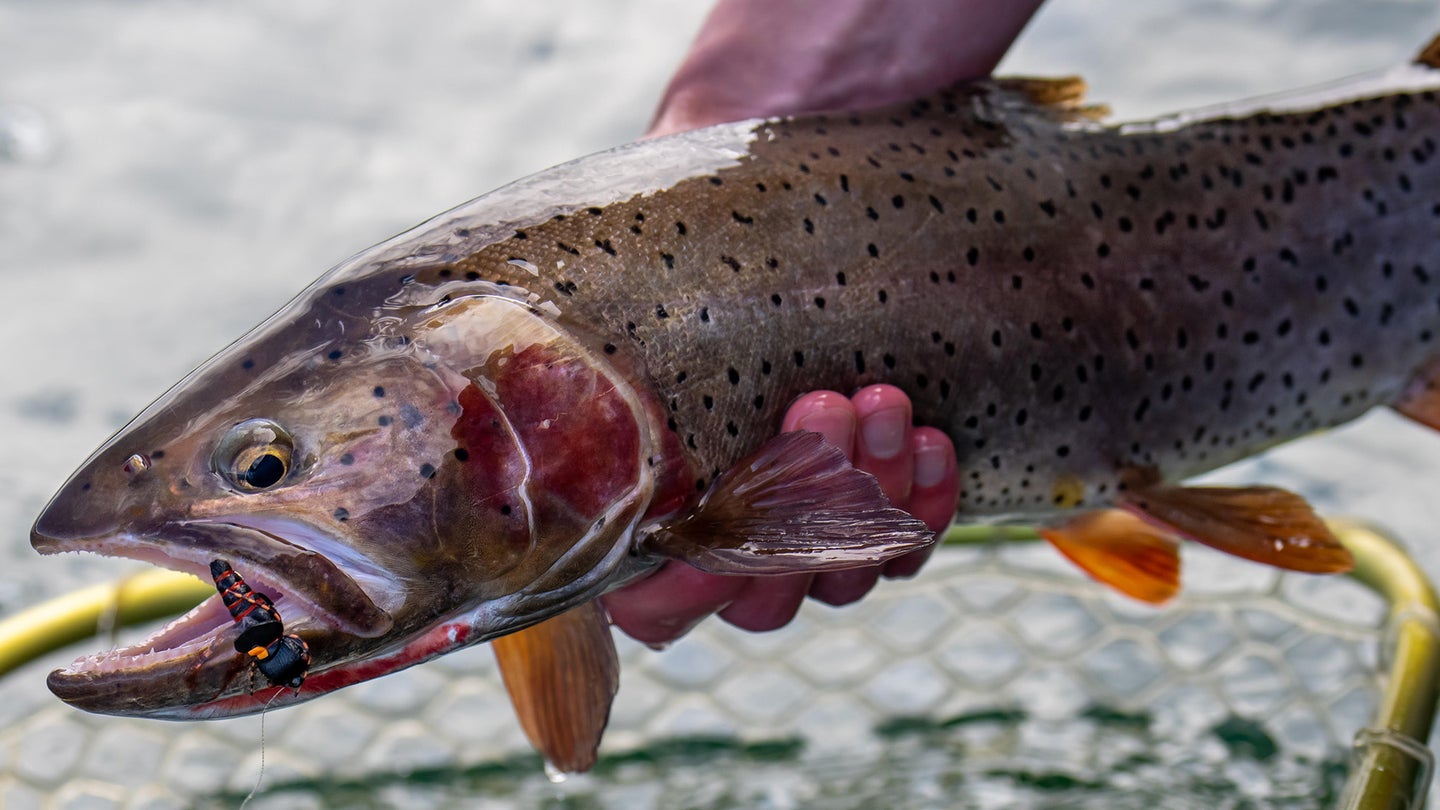The Cicada Report: How to Tie a Project Cicada

An angler holds up a big cutthroat trout taken on a Project Cicada fly. Fly Fish Food
The highly anticipated cicada hatch is underway in southern parts of the country, and anglers should start seeing fish of all species come to the surface to feed on these big bugs. In other words, now is a good time to fill your fly boxes with various cicada patterns. One of our favorites—for everything from trout and smallmouth bass to carp and pike—is the Project Cicada.
Cofounder of Fly Fish Food and well-known fly-tier Curtis Fry developed the Project Cicada to improve on his already popular Sickada pattern. The result was a more well-balanced fly that is easier to tie and offers a more realistic presentation in the water. It has become a popular choice among anglers fishing terrestrial bugs all across the country and one you should carry this spring for the co-emergence of Brood XIII and Brood XIX. While you can purchase Project Cicada flies on the Fly Fish Food website, you can also take a stab at tying some yourself.
How do you tie it? Luckily, Fly Fish Food has a step-by-step YouTube tutorial (see below) to walk you through the process. We also put together the full list of materials that you’ll need for this pattern. If you can tie a bunch of these bugs, you’ll be set for when clouds of cicadas start singing and falling into rivers, lakes, and ponds during the next month. Here’s how to do it.
A look at the Project Cicada pattern from every angle. Curtis Fry
Project Cicada Materials
Hook: Fulling Mill 36040 Streamer Stripper – 4
Thread: Semperfli Classic Waxed Thread – 6/0 – Fl. Orange
Body: Fly Tying Foam – 6mm – Black
Body (alt): Rainy’s Cross-Link Sheet Foam – 6 mm – Black
Wing: Hareline Thin Wing – Light Dun
Over-Wing: Para Post Wing Material – Dark Gray
Over-Wing: Para Post Wing Material – Fl. Orange
Wing Cover: Bug Foam 1MM – Black
Wing Cover (alt): Rainy’s Cross-Link Sheet Foam – 1 mm – Black
Legs: Speckled Centipede Legs – Medium – Speckled Orange
Eyes: Maxima Chameleon Leader Material – 30 lb
How to Tie Project Cicada
Tying Tips From the Expert
In the fly tying tutorial, Fry walks through each step in detail and offers tips along the way. While everything you need to know to tie this bug is in the video, Fry gave me some additional advice. “The hook is the biggest part of making the fly land correctly—hence the use of the streamer hook,” he said. This allows the bug to land right-side up every time for a better presentation on the water. Fry recommends using a size 4 Fulling Mill 36040 streamer stripper hook.
He also emphasized the color of the fly. Different regions of the country experience different color and shade variations of cicadas. Fry recommends matching the colors of your flies to natural bugs in the area. “Burnt orange rather than a hot orange is my preference most of the time.” If you aren’t sure what the cicadas in your area look like, start with burnt orange and go from there.
A rainbow trout fooled by a Project Cicada fly. Curtis Fry
How to Fish Project Cicada
Fry specifically developed this pattern to better match the silhouette of real cicadas, whose wings often go askew on the water. He also designed it with a bit more heft so that it makes a bigger splat when it lands. He emphasizes the importance of “a good splat” to entice strikes. Other than that, Fry tends to fish it with tip-heavy lines like Scientific Anglers MPX or Rio Grand, so it is easier to turn the fly over while still allowing for it to make a splat on the water. He says that these lines float so well, it is easy to give it a mend mid-drift and continue with a good presentation.
Other than Fry’s Project Cicada-specific tips, the best piece of fishing advice we can give is to find the bugs and spend time on the water. Once the hatch starts in your area, it should last around two weeks. You’ll want to start fishing once the bugs take to the air and start singing. Then, they should start dropping into the water, hopefully creating a feeding frenzy. With any luck, you’ll be standing there, fly rod in hand and with a Project Cicada fly ready to go.
The post The Cicada Report: How to Tie a Project Cicada appeared first on Field & Stream.
Articles may contain affiliate links which enable us to share in the revenue of any purchases made.
